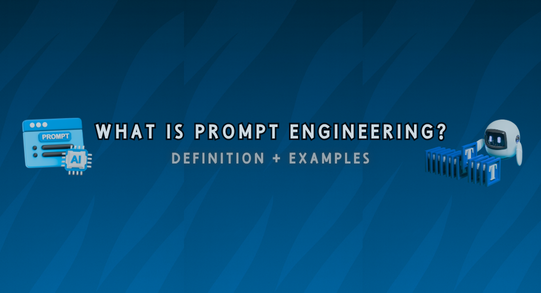Introduction
What Is Prompt Engineering? Definition + Examples – Imagine having the power to talk to a machine—and getting exactly what you want every single time.
That’s the promise of prompt engineering, the new skill shaping the future of how we interact with artificial intelligence.
While AI models like ChatGPT, DALL·E, and other generative tools are dazzling, they’re only as good as the instructions we feed them.
Enter prompt engineering—the art and science of crafting the perfect input to unlock the most accurate, creative, and useful output.
It’s no exaggeration: mastering prompt engineering could become as essential as learning to write an email was in the 1990s.
What Is Prompt Engineering?
At its core, prompt engineering is the process of refining and improving your prompts—the requests you give a generative AI system—until you get the result you want.
It can be as simple as asking ChatGPT to summarize an article, or as advanced as guiding an AI to generate a legal contract, a detailed business plan, or a hyper-realistic image.
The key is iteration: tweaking, clarifying, and adding context to get the AI on the right track.
Anyone can practice prompt engineering.
Whether you’re writing a resume, generating marketing visuals, or coding with AI assistance, the way you phrase your request directly impacts the quality of the response.
Why Is Prompt Engineering Important?
Prompt engineering isn’t just a trick for casual users—it’s critical to the future of AI. Here’s why:
- Accuracy: Well-designed prompts guide AI to produce precise, relevant outputs.
- Efficiency: Saves time by reducing vague or off-target answers.
- Security: Helps prevent malicious “prompt injection” attacks that try to manipulate AI systems.
- Scalability: Businesses use prompt engineering to train AI chatbots, automate workflows, and deliver services at scale.
In a world drowning in data, prompt engineering allows organizations to harness AI efficiently without manually combing through endless information.
Examples of Prompt Engineering
To make this real, here are a few examples:
Text Models (like ChatGPT):
- “Write a professional summary for a marketing analyst.”
- Refined: “Write a professional summary for a marketing analyst applying for a marketing manager role. Keep it under 60 words, in a conversational tone.”
Image Models (like DALL·E):
- “A painting of a cat.”
- Refined: “An Impressionist-style painting of a cat chasing a mouse, using only warm tones.”
The difference? The refined prompts are sharper, contextual, and deliver results closer to what the user actually wants.
What Does a Prompt Engineer Do?
A prompt engineer is someone who designs and tests prompts for AI applications.
Their job is to make sure that AI systems produce accurate and useful outputs—whether for a customer service chatbot, a medical research tool, or a marketing automation system.
Because the field is still new, prompt engineers are in demand across industries like healthcare, education, cybersecurity, and business technology.
They combine creativity with technical know-how, staying ahead of AI’s rapid evolution.
Conclusion
Prompt engineering is more than a buzzword—it’s a gateway skill for the AI age.
As generative AI becomes part of daily life, the ability to ask the right questions and shape precise prompts will separate those who merely use AI from those who master it.
Whether you’re a student, marketer, developer, or business leader, learning prompt engineering means learning how to speak the new language of technology.
And those who learn it early won’t just keep up—they’ll lead.
👉 The future belongs to those who can guide machines with words. Will you be one of them?

